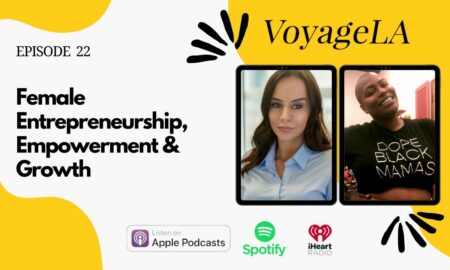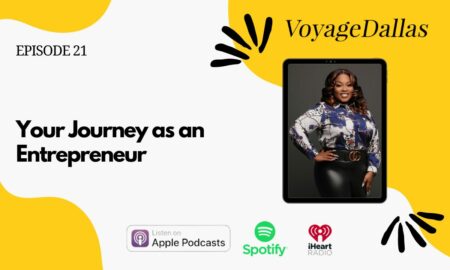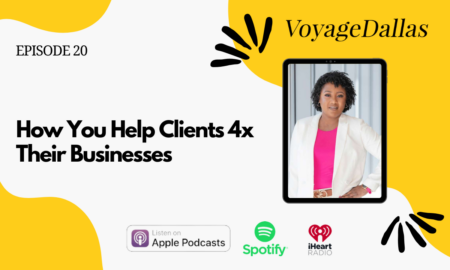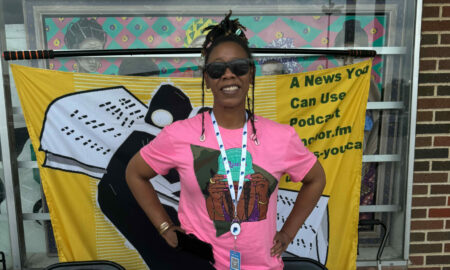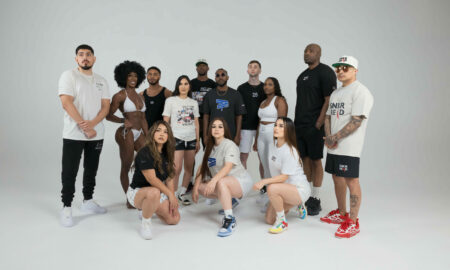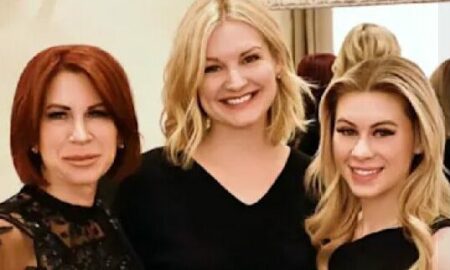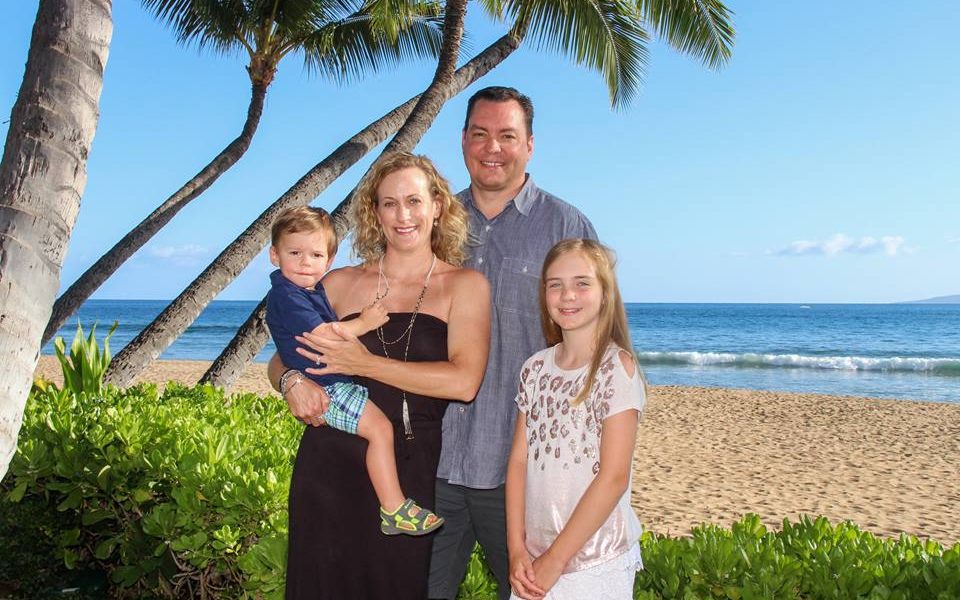

Today we’d like to introduce you to Kevin Shepherd.
Thanks for sharing your story with us Kevin. So, let’s start at the beginning and we can move on from there.
If you learned that many professionals in your field (including yourself) were doing things that jeopardize the future of communities, this country, and this planet, would you make changes to do something about it?
That was the question I began asking myself back in 2009, and what ultimately led to me starting VERDUNITY with two other partners in 2011.
I got my civil engineering degree in the early 90s from A&M and spent the first 15 years of my career designing transportation and site development projects across the country. I was trained (as most engineers are) to think that new growth and expansion of our roads, highways, bridges and communities, in general, was a great thing for everyone. I believed that large roadway widening or extension projects eased congestion and opened up new development opportunities, and new development provided more commercial tax base for cities and live/work/play options for citizens. And, of course, large projects meant bigger fees for my consulting firm.
In 2008 we experienced the Great Recession, and much of the money that was funding our projects disappeared, almost overnight. I remember getting faxes (we still got those back then) and emails from TxDOT, cities and private developers daily letting us know projects were being put on hold indefinitely. The trickle-down effect was us having to lay good people off and scrambling to find new sources of business. We had to shift from large new construction type projects with teams of people across multiple offices to much smaller, maintenance projects with only two or three people working on them. This was when I really started thinking about how we pay for infrastructure and development projects, and wondering what would happen if future recessions were at the same scale as 2008.
Things got kicking again in 2009 with President Obama’s stimulus package. Everyone had money again! But, I was still thinking about where that money came from, since the country, local governments and the private sector debt levels were all at all-time highs and getting worse… Then later that same year, I was offered the opportunity to serve as National Director for my firm’s Community Planning and Urban Design market sector. This role pulled me away from civil engineering and had me working with architects, urban planners and economists on projects across the country. I was exposed to completely new types of projects including sustainability plans, energy conservation strategies, form-based codes and multi-year financial strategies for public and private entities. I also got to see firsthand the challenges that many communities in this country were dealing with regarding blight, pollution, poverty and resource shortages. And, most importantly, I began to understand the importance of placemaking and the relationship between places designed for people and wealth creation and retention. Put simply, places built in the traditional grid pattern with mixed uses and vertical development generate more tax revenue and have lower service costs than those built in the suburban style with everything separated, spread out and dependent on much more expansive infrastructure. The former is financially sustainable. The latter is not.
The more trips I took, the more I began to think that as good as things were (and still are) in North Texas, there were also many lessons to be learned from other places. While growth can be good, it has to be done in a manner that can be maintained over time. Many of the places I visited that were struggling had been nice suburban neighborhoods at one point, but the expansive infrastructure and rigid neighborhood design standards required much more to maintain than cities had financially, and when the streets, homes and schools continued aging, the wealth moved on to somewhere else. I started researching the fiscal implications of different development patterns and happened upon a blog called Strong Towns (www.strongtowns.org) written by Chuck Marohn. In his early writings, Chuck talked about being an engineer turned planner, and how he too was questioning the financial sustainability of the post-WW2 development pattern. He was writing what I was thinking, but in much more defined terms. I contacted Chuck back in 2010 to see if I could use some of his content in my presentations and work, and we have since become good friends and collaborators.
In early 2011, I had seen and read enough. I decided I did not want to be part of the big engineering machine that continues to encourage expansion and lobby for additional money for infrastructure. (Sidenote: we DO need to invest more in our infrastructure, but we need to completely revamp why, how and what we’re trying to accomplish before we blindly hand over valuable dollars). In April 2011, we started VERDUNITY to focus on helping communities develop in a more fiscally and environmentally responsible manner. Today, we’re seen as a progressive planning and engineering firm that helps communities and developers implement solutions that engage residents, improve ROI (return on investment), and enhance the quality of life for current and future generations.
The newest chapter in my personal journey is a new venture we’re launching called CULTIVATE! Collaborative (www.cultivatecollaborative.org). There are a growing number of city leaders, developers and citizens who are figuring out that business, as usual, is broken, but aren’t sure how to move forward. CULTIVATE is going to focus more on educational workshops, lean planning and tactical (pop-up) placemaking efforts to help people who are ready to move past the status quo. Our first workshop is in early November in Dallas, and then we’re taking the workshops on the road across the country in 2018.
We’re always bombarded by how great it is to pursue your passion, etc – but we’ve spoken with enough people to know that it’s not always easy. Overall, would you say things have been easy for you?
It’s never an easy road when you’re starting a new business, especially one that is challenging the mentality of a mega industry like civil engineering and development. A lot of people thought we were crazy when we first started, and some still do, but we’ve seen a consistent uptick in response to our message. We’re just fine with people who don’t get us or our message. We’re happy to work with the people and places who do get it and want help.
There are three challenges we’re working to overcome.
The first is apathy. The majority of people today are on autopilot and do not have or make the time to keep up with this kind of stuff. Typically the only time people engage with their city is to fight something they don’t like. It should be the opposite. Also, most people just think that when their street or sidewalk or school get old, their city will have the money to fix it. In many cases across this country, that is not the case. Cities are going broke, but elected officials are hesitant to let their constituents know this. Hence, many places continue to do the same things because it doesn’t rock the boat. Yet.
The second is the intense loyalty to car-oriented, suburban development in many communities. You know the ones. Traffic is awful – add more lanes! No apartments – they bring more traffic and don’t pay taxes to support schools. There’s not enough parking! Etc, etc. What I like to ask people who feel this way is whether or not they’d be willing and able to pay higher taxes to support these beliefs, because that’s what it will take for cities to maintain everything when the growth slows and revenue from new development drops. The stronger and more sustainable approach- fiscally, environmentally and socially – is to build more compact neighborhoods with a mix of housing types where most daily needs are available via biking and walking.
The third has to do with the development regulations in cities. What many places need are small developers who are willing to come in and build small housing or mixed-use projects (duplexes, fourplexes, etc) on vacant lots and entrepreneurs who want to start local businesses in historic downtowns and Main Street. These are efforts that help cities fill housing, employment and revenue gaps and contribute tremendously to a city’s unique identity, but many times city codes and processes prohibit these things or make it so expensive they can’t even start. We have to change things to where it is easier for these guys to start, grow and thrive, and harder for the big corporations and developers to build things that worsen cities’ financial position. This is an area we plan to focus on with our CULTIVATE Collaborative efforts.
So let’s switch gears a bit and go into the Verdunity story. Tell us more about the business.
There are plenty of engineering and planning firms out there ready and able to continue the status quo. We are not that. Our token phrase is that we are not interested in designing big elaborate projects with money cities don’t have, but would rather help communities find ways to make meaningful progress immediately with the resources the DO have on hand.
VERDUNITY provides resource conscious engineering and site development services for cities and developers who want to build lovable and resilient places where people take priority over cars. CULTIVATE focuses on workshops, planning and placemaking projects that help create a culture of collaboration, get more done with existing resources, and grow a self-sufficient and resilient local economy. Personally, I’m known as a “creative engineer” and respected for my commitment to sustainability, fiscally-based planning and economic gardening (growing local businesses and jobs).
I’m proud of the role we’ve played in changing the conversation about growth and development in Texas and nationally, as well as advocating for change in the engineering industry. We just learned that one of our projects (Royse City’s Comprehensive Plan) won TX APA’s (American Planning Association) ‘Plan of the Year’ award. It’s always cool when your peers recognize the work you’ve done, but I’m especially fond of that project because of how many new concepts were explored and how we were able to change the conversation in the community from ‘growth at all costs’ to ‘let’s grow in a manner we can sustain”.
Our core purpose is to preserve and enhance the quality of life for future generations. We can say with confidence that every project we do is moving communities toward a more resilient, healthy and prosperous future.
Has luck played a meaningful role in your life and business?
One of my mentors taught me a long time ago that luck is what happens when preparation meets opportunity. I’m a huge believer in that. I read and listen to podcasts a lot, and always have my radar up for opportunities to connect people and ideas together. When an opportunity for me or someone I know presents itself, I want to be ready.
We had a run of bad luck at the beginning of VERDUNITY when a few contracts we were counting on to sustain us fell through. They weren’t totally in line with our core purpose, but were good-sized projects that would give us some runway to pursue more of what we really wanted to do. The result of that was doubling down on researching and improving our message, and started our march to where we are today.
Overall though, I’ve been blessed with a ton of good luck. Chuck Marohn with Strong Towns, who I mentioned earlier, just got named as one of the top ten most influential urbanists of all time by Planetizen. I’m thankful I reached out to him when I did, and lucky to have him as a good friend, advisor and fellow engineering disruptor. Jordan Clark, a fellow Verdooner/Cultivator I hired a few years ago, just happened to be listening to an episode of the Strong Towns podcast I was featured on when he was looking for a job. He reached out via Twitter, which led to a phone conversation, flying him to Dallas from Boston for an interview, and eventually an offer. He’s been awesome.
Our CULTIVATE! deal had a bit of luck involved too. Matt Lewis, Amanda Popken and I had known each other professionally, but not really worked together. We just happened to have a call about a potential project opportunity when we were all considering the idea of workshops. We passed on that specific project opportunity, but conversations about the workshops continued and gelled into the CULTIVATE! idea in a matter of weeks.
Contact Info:
- Address:5307 E Mockingbird Lane, 5th floor
- Website: Www.verdunity.com
- Phone:2144256720
- Email:kevin@verdunity.com
- Facebook: @verdunity, @cultivatecollab
- Twitter: @k_shepherd, @verdunity, @cultivatecollab
- Other: Www.cultivatecollaborative.org









Image Credit:
VERDUNITY
Cultivate!
Getting in touch: VoyageDallas is built on recommendations from the community; it’s how we uncover hidden gems, so if you know someone who deserves recognition please let us know here.












